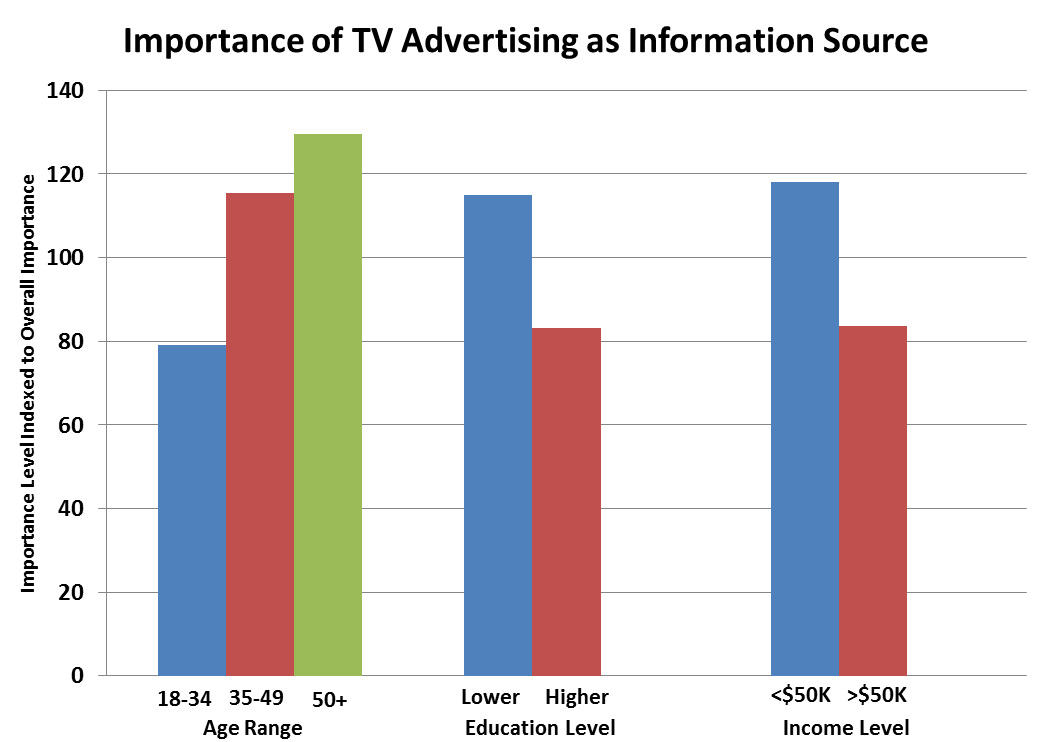There are many different channels of information that a brand’s potential customers may be exposed to during the course of their journey toward making a purchase from the brand. Taken together, these channels – which will influence the customer positively or negatively – form the path to purchase.

While each information channel should be ready to be effectively activated by a brand’s target customers, certain channels will be more influential with particular targets.
As part of The Brand Strength Monitor (TBSM), the syndicated MSW-ARS brand strength tracking solution, we collect information on the perceived importance of some of the most prominent information channels along the path to purchase. Across nearly 6000 recent responses aggregated across a wide variety of product categories, we have identified five demographic tendencies toward how particular information channels are perceived in terms of importance by certain types of customers.
Television – Getting Grayer
Television advertising is cited most often as an important source for product information across almost every demographic group. That’s the good news. But its prominence declines dramatically among younger consumers. On top of that, it is less trusted as a source of product information by those who are more educated and those with higher incomes.

So while television clearly is still of great importance, many prime targets will be best reached through other channels along the path to purchase.
Younger Generations Still Turn to Advertising
Younger people still turn to advertising as an important source of information, but they are more likely to find other types of media more important than do their elders. And in fact, Millennials (age 18 to 34) are one generation where online advertising actually eclipses television as an important source of product information. Younger people are also more likely to trust outdoor advertising, radio and news stories.

Women Go the Extra Mile
While getting product information from advertising in the media we consume is broadly viewed as important across demographic groups, one particular group appears to be particularly willing to make the effort to gather information from online reviews and product ratings. That would be women, who are 60 to 70 percent more likely than men to rate these information sources as important to them.

Special Offers – Who’s Got the Time?
The information channels studied in TBSM include multiple types of special offers or coupons. Consistently, older respondents are substantially more likely to rate these as important to them. This makes sense given that many seniors are on a fixed income where modest savings can add up. Plus, those who are retired will be more likely to have the time to track down the best offers.

News You Can Use
Those with higher education levels are less likely to select television as an important information source than those with lower education levels. In fact those with a Master’s degree or higher are substantially lower in this regard than even Millennials. However, one product information source that the most highly educated consumers indicate is important to them is news stories. While these may seem out of marketers’ control, native advertising and content marketing are avenues that could be pursued to reach highly educated consumers that would be consistent with this finding.

Of course, these results are averages across a wide variety of diverse categories and the specific reality in your particular category may vary somewhat. The Brand Strength Monitor can help you understand the dynamics of your particular category. Please contact us at sales@thebrandstrengthmonitor.com for more information.


